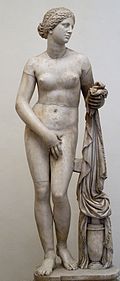| Part of a series on |
| Platonism |
|---|
 |
| The Republic |
| Timaeus |
| Related articles |
| Related categories |
At least two dozen epigrams have been attributed to Plato, mostly in the Greek Anthology . [1] These are short poems suitable for dedicatory purposes written in the form of elegiac couplets. [2] Their authenticity is disputed. [3]
Contents
- The epigrams
- The Greek Anthology
- Further epigrams
- Plato the Younger
- Posidippus or Plato the Comic Poet
- Notes
- References
- External links
They include eight "love" or "amatory" epigrams (one commemorative, six erotic, and one funerary); [3] dedicatory epigrams; sepulchral epigrams, and dedicatory or descriptive epigrams.
Typical of ancient Greek literature (and regardless of their Platonic authenticity), the epigrams refer to historical personalities, places in and around ancient Greece, and specific characters of Greek mythology.
